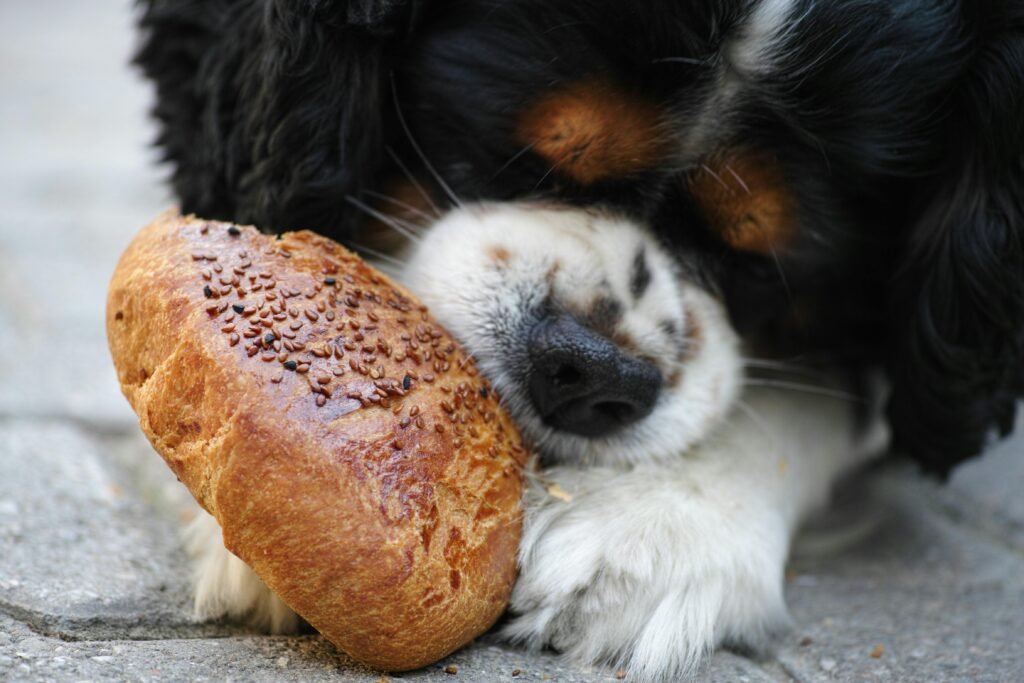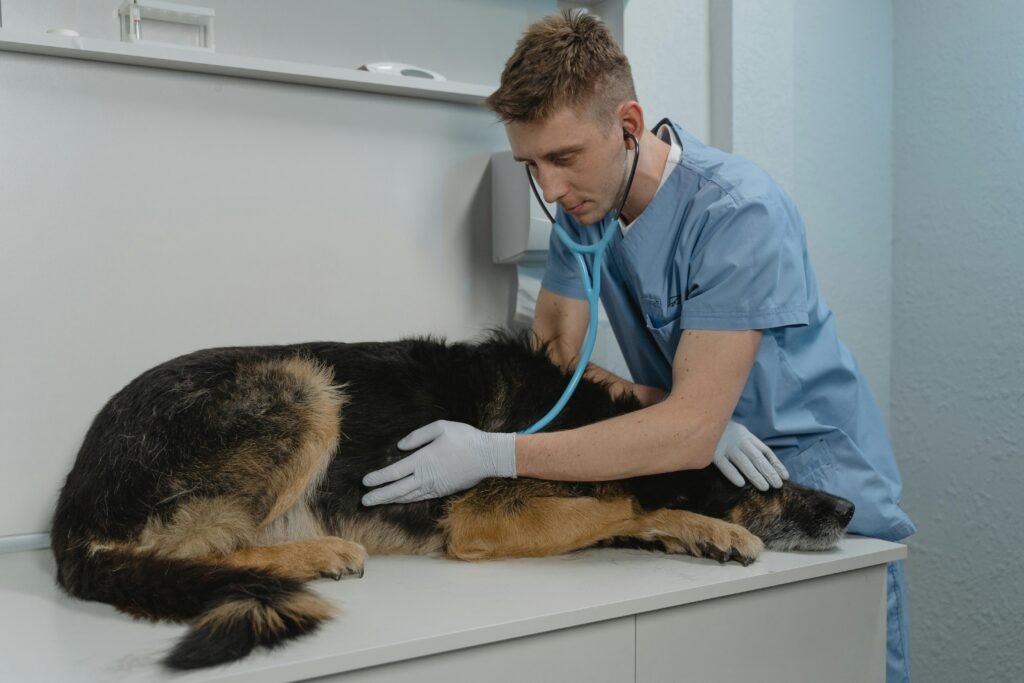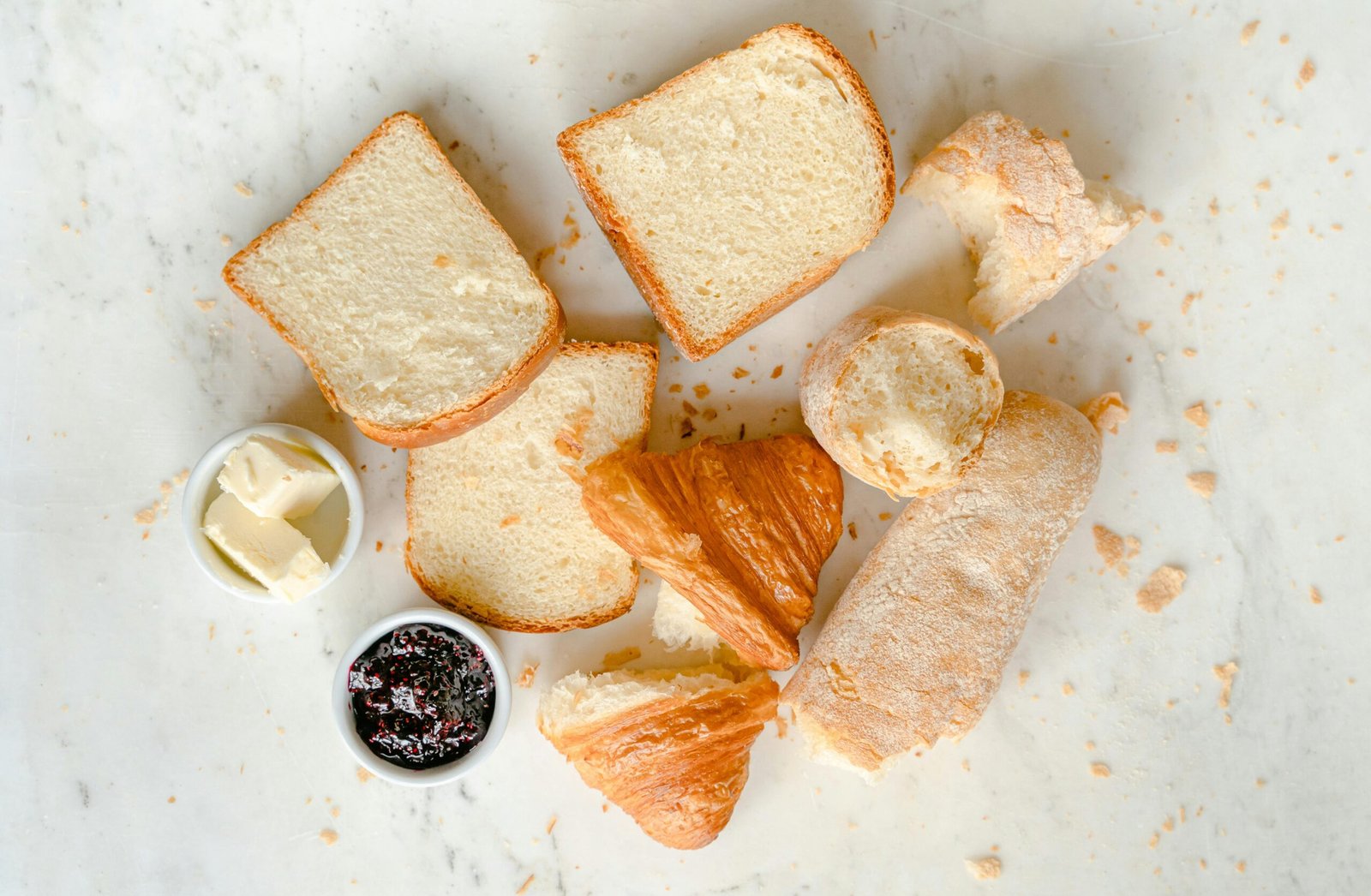I have always been a passionate pet parent who insists on the very best for my dog. I often ask myself, “can dogs eat bread?” I remember the excitement when I first shared a small piece of plain bread with my dog during a long walk. That moment made me curious about what benefits and risks bread could bring.
This article is a detailed recount of my unique journey combined with expert advice from trusted veterinarians and canine nutritionists. My goal is to help fellow pet lovers, pet parents, and future pet parents make informed choices.
Understanding the Basics: Can Dogs Eat Bread?
I began my exploration with the question, “is bread bad for dogs?”. Through my research and conversations with experts, I learned that dogs can indeed eat bread. But we need to ensure it is plain and given in moderation. When I ask, “can my dog eat bread?”, I always check the ingredient list to ensure that the bread is free of harmful additives like raisins, garlic, or xylitol.

When someone wonders, “can you give dog bread?”, I explain that a small piece of plain bread can serve as an occasional treat. My personal experience, combined with trusted advice from resources like the American Kennel Club, confirms that plain white or wheat bread is generally safe for a healthy dog if served sparingly.
Health Benefits of Bread for Dogs
I enjoy sharing a small piece of plain bread with my dog during active days. Here are some of the benefits I have observed:
- Energy Boost: A bite of plain bread gives my dog an instant source of carbohydrates, fueling him for playtime and walks.
- Treat Variety: I often incorporate plain bread in homemade dog treats to create variety and additional texture.
- Digestive Aid: In some instances, plain bread, when used with other digestible foods, can help settle a mild upset stomach.
I always stress moderation. I ensure that bread never overshadows the nutritionally complete diet my dog needs. Relying on trusted sources like the American Kennel Club has helped me maintain this balance.
Risks of Bread for Dogs
I have also learned that there are risks to consider when feeding bread to dogs. Overindulging can lead to several health issues:
- Weight Gain: I observed that too much bread might lead to extra calories, eventually contributing to unwanted weight gain.
- Digestive Issues: An overly carbohydrate-heavy treat may cause stomach upset if given in excessive amounts.
- Toxic Ingredients: I remain extra cautious and avoid bread that contains ingredients such as raisins, garlic, xylitol, or extra sugars. Additionally, raw bread dough poses a severe risk as it can expand in the stomach and lead to dangerous complications.
Hearing stories from fellow pet parents and consulting with experts has reinforced my commitment to only serve plain, additive-free bread in very small quantities.
Different Types of Bread: Which Is Safer for Dogs?
I have experimented with and researched various bread types to determine which options work best:
- Plain White Bread: I offer this sparingly for a quick energy burst. Although it provides little nutritional value, when used as a treat it can be acceptable.
- Whole Wheat Bread: Richer in fiber and nutrients, I prefer whole wheat bread while still ensuring it is free from harmful additives.
- Gluten-Free Bread: I recommend gluten-free bread only if your dog shows signs of gluten sensitivity. I always verify that it does not include xylitol.
- Flavored or Specialty Bread: I steer clear of these because many contain additives or extra sweets that could be harmful.
When asked, “can dogs have bread?” I confidently advise sticking to plain and simple varieties as an occasional treat rather than a dietary staple.
Expert Advice: A Veterinarian’s Perspective
I recently had an insightful conversation with my local veterinarian. He reassured me that plain bread is safe when given in small portions. He always emphasizes, “A small piece of plain bread rarely causes harm in a healthy dog, but it should never replace nutritionally complete dog food.” His advice resonates with my own experiences.

He also warned me about raw bread dough, which can expand in a dog’s stomach and lead to life-threatening conditions like bloat and alcohol poisoning. I value his guidance and always refer to trusted sources such as the Merck Veterinary Manual and the American Kennel Club for the latest safe practices.
Expert Advice: A Nutritionist’s Perspective
I also consulted a canine nutritionist who reinforced the notion that while bread provides energy from carbohydrates, its nutritional benefits are minimal compared to complete dog food. She advised, “Always use bread in moderation as a treat—not a dietary cornerstone.” I pay close attention to her recommendations by balancing any treats with my dog’s daily nutritional needs.

Her advice has shaped my approach: I use small amounts of plain bread as an occasional snack, ensuring that my dog’s overall diet remains balanced and wholesome.
Testimonials and Customer Feedback
I have gathered real testimonials from fellow pet parents to back up these insights:
I tried giving my dog a small piece of plain bread, and he became noticeably more energetic during our walks. It works as a quick energy booster!
This feedback reassures me that, when used sparingly, bread can enhance energy.
Switching to whole wheat bread provided my dog with additional fiber without upsetting his stomach. He enjoys it as part of his occasional treat routine.
This encourages me to choose healthier, nutrient-rich options.
I fed my dog bread too often and soon noticed he started to gain weight. I had to cut back drastically on his treats.
I take this warning seriously and ensure that I always monitor and treat portions carefully.
Plain bread works well occasionally, but once I tried flavored varieties, my dog’s digestive issues worsened. I now stick to plain bread exclusively.
These mixed reviews help me refine my approach and remind me to always go for the simplest options.
Frequently Asked Questions (FAQs)
No, dogs should not eat bread every day. While small amounts of plain, cooked bread (like white or brown bread) are generally safe as an occasional treat. The bulk of his nutrition comes from complete, balanced dog food.
Plain whole wheat bread is generally safe for most dogs in small, occasional amounts. But it’s important to understand the potential risks of allergic reactions or digestive problems.
Q3: What are the best types of bread for dogs? A3: I trust plain white bread, whole wheat bread, and, for dogs with sensitivities, gluten-free bread (provided there’s no xylitol). Always verify ingredient lists carefully.
Q4: How much bread is safe to feed my dog? A4: I stick to one small slice or a few bite-sized pieces based on my dog’s size and energy needs. Moderation is essential.
Q5: Which ingredients should I avoid when selecting bread for my dog? A5: I ensure that any bread given avoids raisins, garlic, xylitol, and extra sugars. These ingredients could be harmful.
Q6: Can bread cause serious health issues for dogs? A6: Excessive feeding of bread, particularly dough, can lead to severe complications like bloat. I always monitor my dog’s reaction to new foods and consult my veterinarian if I notice anything unusual.
Recommended Products for Pet Care
Affiliate Disclosure: As an Amazon Associate, we earn commission from qualifying purchases.
I have carefully selected a couple of products from Amazon that have helped me organize and serve treats responsibly:
1. Barnyard Designs Airtight Farmhouse Container
I use this container to keep my dog’s treats fresh and well-organized. The Barnyard Designs Airtight Farmhouse Container is perfect for storing small pieces of treats like plain bread, ensuring they remain crisp and free of contamination. Its design fits well into any kitchen, and it gives me peace of mind that my dog’s treats are stored safely. Buy on Amazon
2. Biscuits Grain-Free Crunchy Treats Natural
I also discovered these Biscuits Grain-Free Crunchy Treats, which complement my dog’s diet with healthy, natural ingredients. These treats provide a crunchy texture that many dogs enjoy while adhering to a grain-free formula. They are an excellent alternative when I want to mix up the treat routine with an option that is both tasty and healthy. Buy on Amazon »
Conclusion
I have learned that plain bread, when given in moderation, can be a safe and occasional treat for dogs. I always choose simple, additive‐free bread and carefully verify every ingredient list. By combining my personal experience with expert advice from veterinarians and canine nutritionists, I continuously monitor my dog’s health and adjust his diet accordingly.
I advise fellow pet parents to remain cautious and always prioritize quality over quantity. Serving a small piece of plain bread as a treat can be beneficial as a quick energy boost—but it should never replace a balanced diet. Remember, every dog is unique, so always consult your veterinarian when introducing new foods.
I hope my personal journey and expert-backed insights help you decide wisely on your dog’s treat options. Every thoughtful choice contributes to a happier, healthier life for our beloved pets.
Additional Resources & References
For more detailed pet care information and to support the points mentioned in this article, please refer to these authoritative resources:
- American Kennel Club – Can Dogs Eat Bread? https://www.akc.org/expert-advice/nutrition/can-dogs-eat-bread/
- ASPCA – Pet Safety Information & Nutrition Tips https://www.aspca.org
- Canine Bible – Can Dogs Eat Bread? Toxic & Safe List (Vet-Approved) https://www.caninebible.com/can-dogs-eat-bread/
- Environmental Literacy Council – What Happens if a Dog Eats Too Much Bread? https://enviroliteracy.org/what-happens-if-a-dog-eats-too-much-bread/
- Merck Veterinary Manual – Food Hazards for Dogs (For detailed medical guidelines on food hazards, refer to the Merck Veterinary Manual as often cited by veterinary professionals.)
- Human-Animal Bond Research Institute (Provides research on pet nutrition and overall dog health)
Image Credits: All dog images used in this article are under the CC BY 2.0 license, powered by Pexels.
I invite you to share your own experiences and questions. Your insights help us all make the best possible choices for our furry friends. Stay informed, stay cautious, and give your pet the thoughtful care they deserve.















